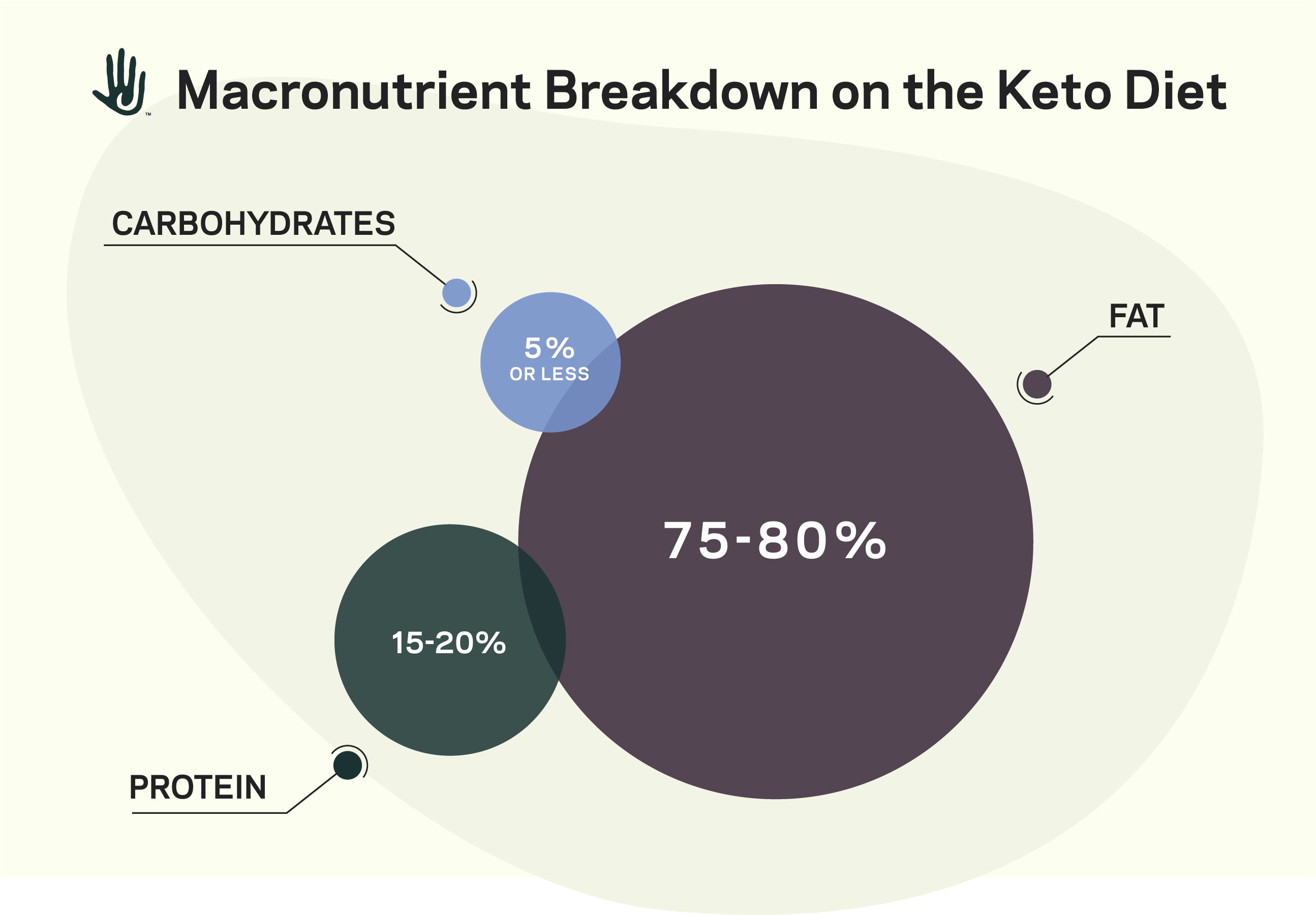You’ve decided that you’d like to try the keto diet, but don’t know where to start. There is a lot of general advice that can help you easily transition into a keto diet and maintain the diet for long-term success. In this article, we will give you all of the tools necessary to kick-start your keto diet and begin your healthy aging journey.
Keto diet overview
The keto diet is a high-fat, low-carbohydrate diet and is sometimes known as a “carbohydrate-restricted diet.” What this means is that keto requires you to drastically reduce the amount of carbohydrates (“carbs”) you consume in your diet — foods like bread, pasta, desserts, and even sugary fruits.
On the keto diet, the macronutrient breakdown — the percent of fat, carbohydrates, and protein that your diet consists of — is typically around 75-80% for fat, 15-20% protein, and 5% or less for carbohydrates.
Strategies for success
The following tips have been circulated among successful keto dieters as some of the best ways to begin and maintain a ketogenic diet:
1. Limit carbohydrates gradually
The first recommendation is to slowly reduce the carbohydrates in your diet rather than go cold turkey on the first day. Over the span of a few weeks, you should try to eat fewer carbohydrates each day until your total daily intake is at or below 50 grams per day.
2. Find low-carbohydrate alternatives
Next, find healthy and satisfying low-carb food sources to replace the carbohydrates you aren’t eating. You don’t want to start off keto by drastically cutting calories, as this could result in low energy and dissatisfaction with the diet.
This substitution can be made easy by replacing high-carb foods with lower- or no-carb alternatives. For instance, rice and potatoes can be replaced by cauliflower rice or cauliflower mashed potatoes.
3. Prioritize fat and protein
To make sure you aren’t hungry in the first few weeks, prioritize fat and protein and eat until you are comfortably full. If you want to adhere to the diet long term, you’ll have to find a pattern of eating that allows you to avoid hunger and feel energized.
4. Make a list
Preparing a keto-friendly shopping list is the best way to successfully begin your keto diet journey. This makes the trip to the store hassle-free and leaves the decisions to your list, not your impulses.
5. Track your macros
Finally, tracking your macronutrients (“macros”) is often recommended, at least in your first few weeks of keto. Diet-tracking apps allow you to input the food you eat and see your daily breakdown of fat, protein, and carbohydrates — making sure you hit your daily goals.
Transitioning to keto
One concern when starting the ketogenic diet is something called the “keto flu.” While it’s not related to the flu virus in any way, this name comes from the flu-like effects some people experience in the first few days to weeks of the diet. These may include:
→ Stomach pain
→ “Brain fog”
→ Dizziness and confusion
→ Nausea
→ Irritability
→ Diarrhea or constipation
→ Muscle cramping or soreness
→ Lack of focus
→ Problems sleeping
While the exact causes of the “keto flu” aren’t quite known, experts believe that the symptoms may be the result of the body’s response to cutting out carbohydrates — since it takes a short amount of time for metabolism to adapt to a drastic change in diet.
Keto-approved shopping list
Many successful keto dieters rely on a foundation of the following foods that are both “keto-friendly” and full of tasty nutrition:
→ Non-starchy vegetables such as leafy greens, cruciferous, green beans, asparagus
→ Eggs
→ Unprocessed meats including chicken, turkey, fish, beef, pork, venison, bison, and organ meats
→ Full-fat dairy: cheese, yogurt, cream, butter
→ Nuts, seeds, and nut butters
→ Low-sugar fruit: avocados and berries
→ Oils and fats: coconut, olive, avocado oils
→ Beverages: water, coffee (black or with cream), tea, seltzer, low-sugar alcoholic beverages, diet soda, other sugar-free beverages
→ Spices and sugar-free condiments and dressings
→ Exogenous ketone supplements (like Metabolic Switch®) and MCT oil

Metabolic Switch® DrinkSHOP NOW |

Metabolic Switch® PowderSHOP NOW |
Foods to avoid on keto
What not to eat on keto is pretty straightforward — anything generally high in sugar or carbohydrates.
→ Bread
→ Pastas
→ Cereals
→ Rice
→ Tortillas and tortilla chips
→ Potatoes (plain and sweet)
→ High-sugar fruits and fruit juice
→ Most beans and legumes
→ Beer, sweet wine, soda, and any alcoholic beverages high in sugar
→ Processed foods (including processed meats)
→ Sauces and condiments high in sugar (BBQ sauce and sugary salad dressings)
Let’s get started
With some basic knowledge on the keto diet and a plan of action, it’s time to get started. Luckily, Juvenescence is here to help. Explore our site for more info on the keto diet, fasting, and other lifestyle optimization strategies.



